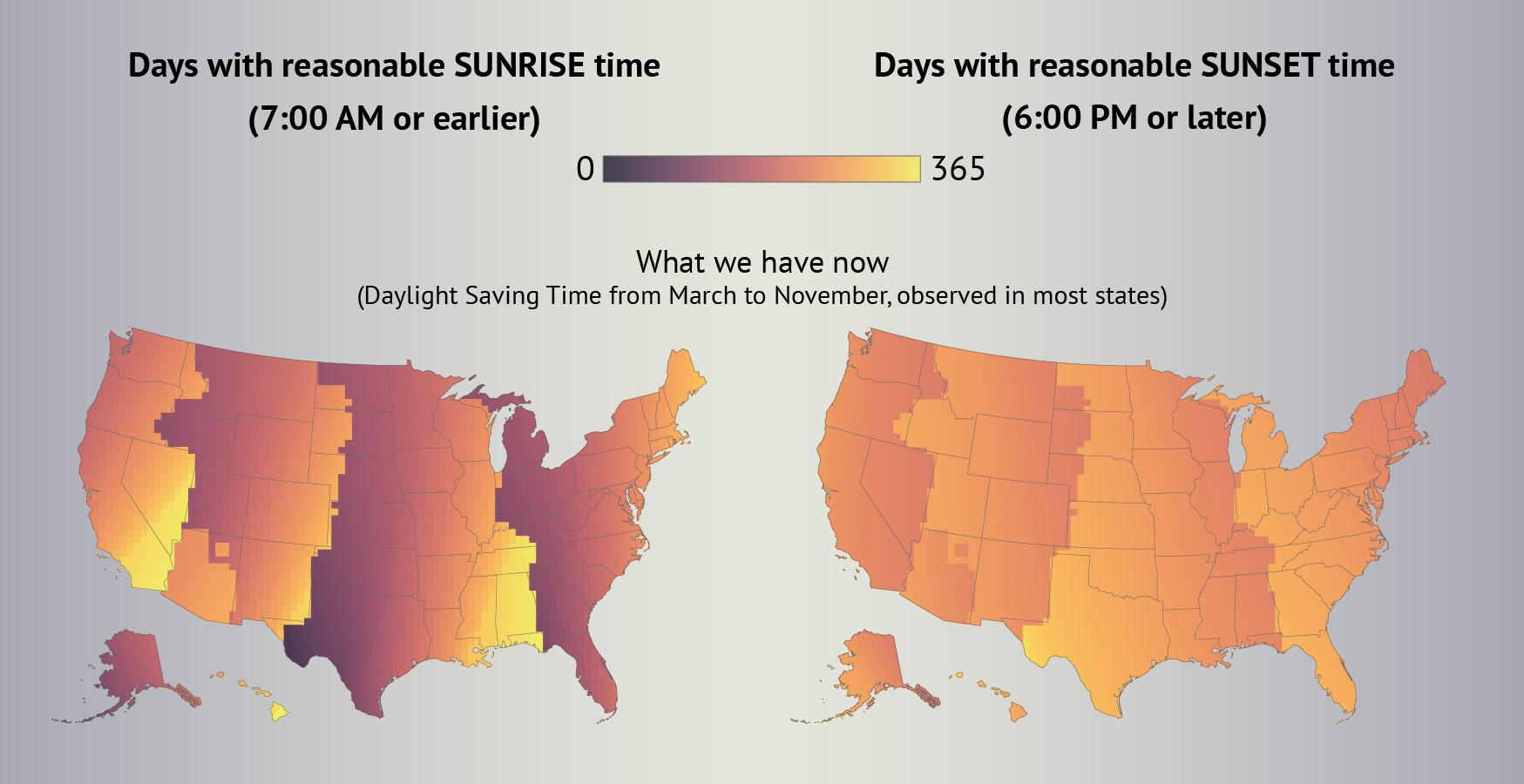


Spring Forward: How to Deal with the Daylight Saving Shift

March is the toughest month of the year for sleep due to daylight saving time: the clock goes forward an hour so you’ll lose one hour of sleep, which may result in disruption of sleep for several days.
Who does daylight saving time (DST) affect most?
Although the effects on people are significant, not everyone experiences them equally. Craig Heller, Professor at Stanford University and Head of the Sleep Research Center, explains: “The greatness of the effect depends on where you are. If you’re in the very northern or southern latitudes, the daylight saving won’t have an effect at all, because if you’re close to the equator the day length doesn’t change. It’s the middle latitudes where you see the effects.” This means you will find the effects mostly in cities like New York, San Francisco, and Seattle.
If you find yourself in one of those cities (or anywhere in the middle latitudes), it will probably take you several days to fully recover from daylight saving in terms of your sleep cycle. Dr. Heller compares the effect with a jet lag: the consequences are really similar to each other. This is why people who travel often for their work generally get used to it quicker.
This map shows how many days of the year America has reasonable sunrises and sunsets with Daylight Saving Time. Reasonable, as defined by Andy Woodruff, is a sunrise at 7 am and sunset at 6 pm. As you can see, the daylight saving effect is the biggest in the middle of America.

What happens to our sleep during DST?
So what does the daylight saving effect do to you exactly? Dr. Heller, also a member of Eight Sleep’s Scientific Advisory Board, explains: “You are getting up earlier but your body clock is not necessarily putting you to bed earlier because it doesn’t feel like bedtime yet. You’re getting less sleep which leads to risks in performance the next day.” These risks in performance may result in a greater number of traffic accidents: a study that used data of 21 years worth of fatal automobile accidents shows that there is a significant increase in accidents on the Monday after the spring shift to daylight saving time.
Disrupted sleep could also cause proposed health risks such as heart attacks and strokes. An American study shows that the Monday after daylight saving time, the risks of having a heart attack raises by 24% compared to other Mondays during the year.
There’s no exact answer to how long the daylight saving effect lasts. Some people will get used to it very quickly and some people will have a greater disturbance of their sleep cycle. But generally, most people have some disruption of their sleep time for 3 to 4 days after the spring shift.
Prepare yourself for DST
It’s never too late to start getting ready for daylight saving. Here’s a way in which you can tweak your schedule the Friday and Saturday ahead of the time change, to mitigate the effect: try to go to bed 30 to 60 minutes earlier. This will help you mitigate the effects of daylight saving. How well this will work depends on how strong your biological rhythm is. You may go to bed 30 min earlier, but that doesn't mean you will fall asleep 30 min earlier. It’s worth the try, according to Dr. Heller.
How to cope with the effect
Luckily, there are some easy ways to cope with feeling the daylight saving effects. Dr. Heller suggests following the basic recommendations for quality sleep, such as:
- Don’t surround yourself with bright lights in the evening
- Avoid using a device with blue light in the evening
- Make sure to relax before going to sleep
- Stop working 3 to 4 hours before bedtime
If you have an Eight Sleep Pod, here are some tips to help you mitigate DST:
- Adjust your bedtime in the app to be 30 minutes earlier
- Customize your temperature schedule to begin easing out of warmer Winter settings -- this may mean dropping your temperature levels by one or two notches across each sleep stage
- Use the Pod’s thermal alarm to help you wake up energized
Don’t have a Pod Cover yet? Get yours here and see your sleep quality improve by up to 32%.
If you follow the recommendations above, you will have good, quality sleep even though you’re sleeping one hour less. And eventually, you'll adjust.